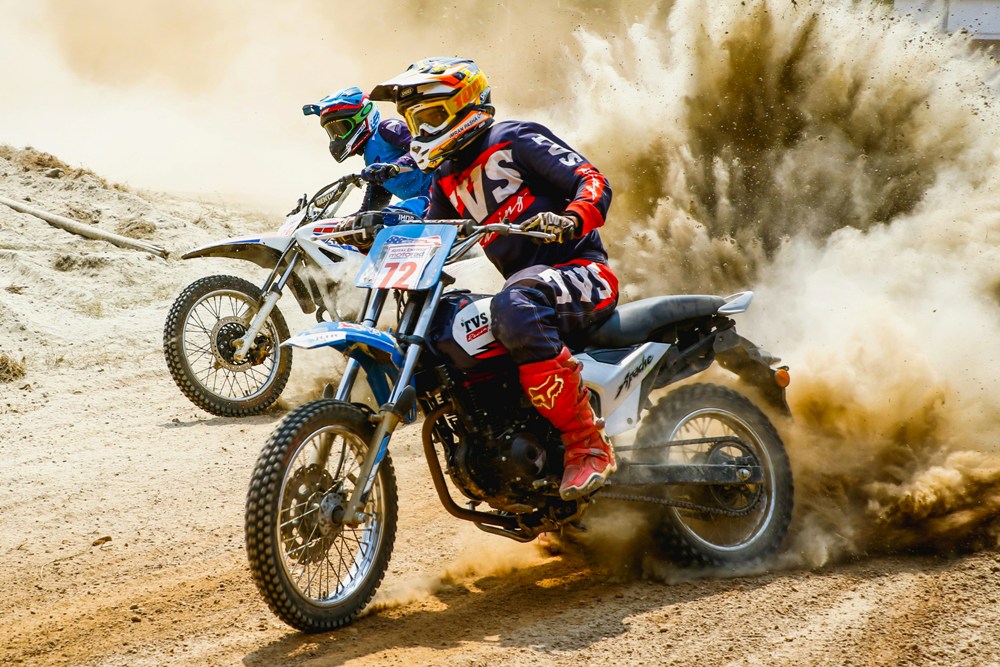
Motocross is a thrilling and challenging sport, one that demands skill, precision, and a deep understanding of the bike and terrain. For beginners, diving into the world of motocross can feel overwhelming. From mastering the fundamentals of bike control to understanding the importance of gear and safety, there are many aspects to consider. However, with the right approach, motocross can be an incredibly rewarding experience. Whether you're preparing for your first ride or looking to fine-tune your skills, these tips will help set you on the path to becoming a confident and skilled motocross rider.
Understand the Basics of Your Bike
Before even thinking about hitting the track, it's crucial to understand the ins and outs of your motocross bike. Familiarize yourself with the bike's components, including the engine, suspension, brakes, and tires. Each of these elements plays a vital role in how the bike performs, especially in demanding conditions. Take the time to adjust the suspension according to your weight and riding style, as this will affect comfort and control. Learn how to maintain the bike regularly, checking the tire pressure, oil levels, and brake systems. A well-maintained bike is safer, performs better, and can last much longer, ultimately enhancing your experience on the track.
Master Basic Riding Techniques
As a beginner, it's important to first focus on mastering the core riding techniques that will build your confidence on the bike. Start by practicing throttle control and braking, both of which are crucial for staying balanced and in control. When accelerating, avoid jerky movements; instead, focus on smooth, steady throttle input. When braking, be gentle but firm, making sure to use both the front and rear brakes in tandem. Additionally, learning how to corner properly is key. Keep your body relaxed, position your weight correctly, and lean into turns to maintain traction and speed. These basic techniques will give you a solid foundation for tackling more complex maneuvers as you progress.
Wear the Right Gear
Safety should always be your top priority when riding motocross. Wearing the correct gear can make all the difference in protecting yourself from potential injuries. A high-quality helmet, boots, gloves, and pads are non-negotiable. Helmets, in particular, must be well-fitted and meet safety standards to ensure head protection in case of a fall. Body armor can also be beneficial for shielding your torso, especially when riding on rough terrain, and customizing your bike with custom decals can add a personal touch while ensuring visibility. Don't forget about eye protection either; goggles help protect your eyes from dirt, debris, and the sun. Proper gear will not only keep you safe but also enhance your comfort, allowing you to focus fully on improving your skills.
Understand the Terrain
In motocross, the terrain you ride on can vary drastically, and understanding how to navigate different surfaces is essential. Whether you're tackling dirt, sand, mud, or gravel, each surface requires a different riding technique. For example, when riding on loose dirt or sand, you'll need to adjust your body position to keep the bike steady and prevent it from sliding out of control. On harder, more compact surfaces, the focus shifts to maintaining speed while navigating obstacles like jumps and rocks. Pay attention to the track or trail you're riding on, and adjust your riding style accordingly. As you gain experience, your ability to adapt to various terrains will improve, making you a more versatile rider.
Practice Consistently and Set Goals
Like any skill, motocross requires consistent practice and dedication. Set small, achievable goals for yourself to track your progress. Whether it's improving your lap times or perfecting a specific maneuver, having clear objectives will keep you motivated and on track. It's also important to practice in a controlled environment before advancing to more challenging tracks or trails. Start with smaller, less technical obstacles and gradually work your way up as your skills develop. With time, you'll find that your confidence and abilities grow, allowing you to tackle more complex challenges. Remember, consistency is key, so don't rush the process. The more time you spend honing your skills, the better rider you'll become.
Motocross is a sport that requires both physical skill and mental focus. By following these beginner tips and taking the time to master the basics, you can set yourself up for a successful and enjoyable journey into the world of motocross. Whether you're riding for fun or aspiring to compete, the thrill of the ride and the sense of accomplishment that comes with improving your skills are well worth the effort.
EDITORIAL POLICY
The Flash List is dedicated to providing trustworthy editorial content by maintaining strict ethical standards, journalistic integrity, and credible professionalism regardless of any remuneration as working media. The Flash List is not affiliated with third-party companies mentioned and makes no endorsement or guarantee expressed or implied. The preceding article, which contains affiliated link(s) for which compensation was received, is intended for informational reference only and does not constitute advice of any kind. Moreover, a qualified professional should be consulted regarding any lifestyle consideration, medical treatment, or monetary transaction, etc. Content is published in accordance with USFTC regulations and terms and conditions.
MORE ON THE FLASH LIST
































